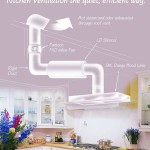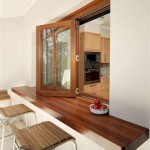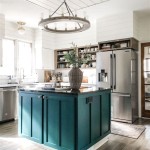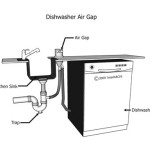Kitchen Storage Racks: Tips For Keeping Your Organized Space Safe
Effective kitchen organization is vital for efficient meal preparation and a comfortable cooking environment. Storage racks are essential tools for capitalizing on available space and ensuring clear visibility within the kitchen. However, simply installing storage racks is insufficient; proper planning, appropriate rack selection, and diligent maintenance are crucial for both organization and safety. This article provides comprehensive tips for leveraging kitchen storage racks to create an organized and safe culinary workspace.
The importance of kitchen safety cannot be overstated. A cluttered kitchen can lead to accidents such as trips, falls, and burns. Poorly stored items can become projectiles, especially during earthquakes or if racks are overloaded. Therefore, a well-organized kitchen, facilitated by appropriately chosen and maintained storage racks, is a critical step in preventing kitchen related injuries.
Assessing Your Kitchen Storage Needs and Space
The initial step in optimizing kitchen storage is a thorough assessment of existing storage capabilities and the specific needs of the household. This assessment dictates the types of racks to acquire, their placement, and their load-bearing requirements.
Begin by evaluating the current storage situation. Take inventory of all items needing storage, including dry goods, cookware, utensils, and small appliances. Categorize these items based on frequency of use, weight, and size. High-frequency items should be readily accessible, while infrequently used items can be stored in less convenient locations.
Next, analyze the available space. Measure existing cabinets, pantries, and open wall areas. Consider vertical space, as this is often underutilized. Note the dimensions of each potential storage area and any obstructions, such as pipes or windows that might limit rack placement. Consider the accessibility of each storage location. Locations near the primary work areas, such as the stove and sink, should be prioritized for frequently used items.
Based on the inventory and space analysis, determine the specific types of storage racks required. Consider factors such as material, size, weight capacity, and adjustability. Common rack types include shelving units, pot racks, spice racks, and under-cabinet organizers. Shelving units are versatile for storing a variety of items, while pot racks are ideal for hanging cookware, freeing up cabinet space. Spice racks keep spices organized and readily accessible, and under-cabinet organizers maximize vertical space.
Furthermore, assessing the weight of items to be stored on the racks is vital. Exceeding the weight limit of a rack can lead to structural failure, potentially causing injury or damage. Choose racks with sufficient weight capacity for the intended use. Heavy items, such as cast iron cookware or canned goods, require sturdy racks made of robust materials like steel or heavy-duty plastic.
Finally, consider the overall aesthetics of the kitchen. While functionality is paramount, the storage racks should complement the existing décor. Choose materials and finishes that blend seamlessly with the kitchen's style. Matching the style and color of the racks to the cabinets and countertops can enhance the overall visual appeal of the space.
Selecting the Right Type of Storage Racks
Choosing the appropriate type of storage rack is critical for maximizing space and optimizing kitchen organization. Various rack types are designed for specific purposes, and selecting the right one can significantly improve both efficiency and safety.
Shelving units are among the most versatile storage solutions. They can be used to store a wide range of items, from dry goods to small appliances. Adjustable shelving units are particularly useful, as the shelf height can be customized to accommodate items of varying sizes. When selecting shelving units, consider the material. Metal shelving is durable and can support heavy loads, making them suitable for storing canned goods and cookware. Wire shelving allows for good airflow, which is beneficial for storing produce or items that require ventilation. Wood shelving offers a more aesthetically pleasing look and can be a good choice for open shelving.
Pot racks are designed specifically for storing cookware. They free up valuable cabinet space and make pots and pans easily accessible. Pot racks can be mounted on the ceiling or wall. Ceiling-mounted pot racks are ideal for kitchens with limited wall space, while wall-mounted pot racks are suitable for smaller collections of cookware. Choose a pot rack with sturdy hooks that can securely hold the weight of your pots and pans. Ensure the rack is installed properly and can support the combined weight of all the items it will hold.
Spice racks are essential for keeping spices organized and within easy reach. They come in various forms including wall-mounted racks, in-cabinet racks, and countertop racks. Wall-mounted spice racks are a great option for maximizing wall space, while in-cabinet racks keep spices out of sight and organized within a cabinet. Countertop spice racks are convenient for storing frequently used spices, but they can take up valuable counter space. Consider the size of your spice collection and the available space when selecting a spice rack.
Under-cabinet organizers are designed to maximize vertical space within cabinets. They include pull-out shelves, tiered racks, and door-mounted organizers. Pull-out shelves make it easier to access items stored at the back of cabinets, while tiered racks provide better visibility and organization for smaller items. Door-mounted organizers are ideal for storing cleaning supplies or small utensils. These organizers are particularly useful for making the most of limited cabinet space.
Pantry organizers are specifically designed for pantry storage. These organizers can include shelving units, pull-out baskets, and door racks. Pull-out baskets make it easier to access items stored at the back of the pantry, while door racks provide extra storage for smaller items. Choosing organizers specifically designed for pantry use can greatly improve the efficiency and organization of your pantry.
Rolling carts offer versatile storage solutions that can be easily moved around the kitchen. They can be used to store extra supplies, cookware, or even serve as a temporary workstation. Rolling carts are particularly useful in small kitchens where space is limited. Choose a cart with sturdy wheels that can easily roll across different types of flooring. Ensure the cart is stable and can support the weight of the items it will hold.
Ensuring Stability and Safety of Kitchen Storage Racks
The stability and safety of kitchen storage racks are paramount to preventing accidents and injuries. Proper installation, weight distribution, and regular maintenance are essential for ensuring that racks remain secure and functional over time.
First and foremost, proper installation is crucial. Whether mounting shelves to a wall or assembling a free-standing unit, adhere strictly to the manufacturer’s instructions. Use appropriate hardware for the type of wall material (e.g., drywall anchors for drywall, screws for studs). Never assume that the provided hardware is adequate for all situations; if in doubt, consult a professional or purchase heavier-duty hardware.
When mounting racks to a wall, locate and utilize wall studs whenever possible. Studs provide significantly more support than drywall alone. A stud finder is an essential tool for this task. If studs are not available in the desired location, use high-quality drywall anchors with a sufficient weight rating to support the intended load. Distribute the weight evenly across the rack. Avoid placing heavy items on one side or in one area, as this can create an imbalance and increase the risk of tipping or collapse. Place heavier items on lower shelves to lower the center of gravity.
Adherence to weight limits is critical. Each storage rack has a maximum weight capacity that should never be exceeded. Overloading a rack can compromise its structural integrity and lead to failure. If the weight limit is not clearly marked on the rack, refer to the manufacturer’s specifications. It is always better to err on the side of caution and choose a rack with a higher weight capacity than you think you need.
Regular inspection and maintenance are also essential. Periodically inspect all racks for signs of wear and tear, such as loose screws, cracks, or rust. Tighten any loose screws and replace any damaged parts immediately. For metal racks, apply a rust inhibitor to prevent corrosion. Clean racks regularly to prevent the buildup of dust, grease, and grime. Use a mild detergent and water, and dry thoroughly after cleaning.
For free-standing units, ensure they are stable and level. Use shims or leveling feet to adjust the height and prevent wobbling. Secure tall or unstable units to the wall with anti-tip straps. These straps prevent the unit from tipping over, especially in households with children or pets. Store sharp objects safely. Keep knives, scissors, and other sharp utensils in designated holders or sheaths to prevent accidental cuts. Avoid storing sharp objects on high shelves where they could fall and cause injury.
Consider the placement of storage racks in relation to other kitchen elements. Do not block walkways or obstruct access to appliances. Ensure there is adequate space around the racks for comfortable movement. Positioning racks away from heat sources, such as the stove or oven, can prevent damage to stored items. This is particularly important for items stored in plastic containers.
Finally, consider the accessibility of items stored on the racks. Frequently used items should be easily accessible, while infrequently used items can be stored in less convenient locations. Avoid storing heavy items on high shelves, as lifting them down can be difficult and potentially dangerous. Utilize step stools or ladders to reach items stored on high shelves, but always ensure the step stool or ladder is stable and used safely.

9 Tools To Organize Your Kitchen Like A Pro Reviews By Wirecutter

Real Life Pantry Organization Tidymom

50 Best Kitchen Organization Ideas And S For Small Spaces

Fridge Storage For Food Safety

35 Small Kitchen Organizers That Make The Most Of Tight Quarters Reviews By Wirecutter

Keep Your Kitchen Cabinets Organized With These 21 Tips From Experts
:max_bytes(150000):strip_icc()/nycneat-7b665e4f521d4be49b65e428a3373478.png?strip=all)
50 Small Kitchen Storage Ideas You Ll Wish Knew Sooner

50 Best Kitchen Organization Ideas And S For Small Spaces

How To Organize Your Kitchen Cabinets And Pantry Feed Me Phoebe

How To Organize Your Kitchen Cabinets And Pantry Feed Me Phoebe
Related Posts








